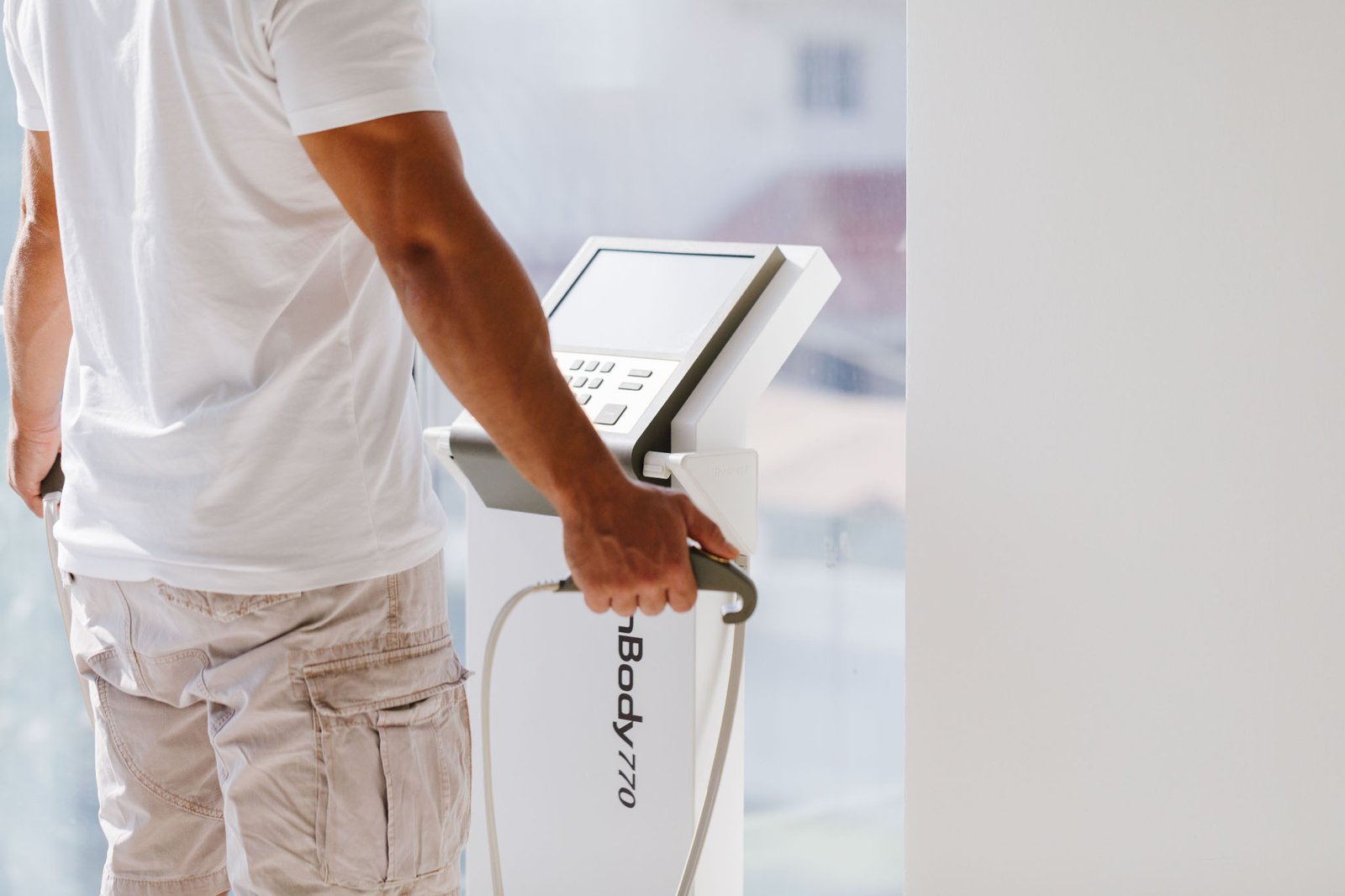When crises hit, time, knowledge, and equipment are frequently the boundary between life and death. Where basic ambulances offer the necessary means of medical transportation, an Advanced Life Support (ALS) ambulance has dedicated equipment and highly qualified specialists who are able to cope with the most severe emergencies.
The entry of an ALS ambulance is akin to a mobile emergency room on wheels, with state-of-the-art technology, high-tech monitoring, and life-saving equipment. As it enable paramedics to stabilize patients on their way to the hospital.
This article will provide a closer glimpse into a lifesaving ambulance by ALS, the equipment used, its functionality and its importance in saving lives.
What Makes it an ALS Ambulance?
An ALS ambulance (Advanced Life Support ambulance) is used with patients in life-threatening conditions that need immediate medical attention before they arrive at a hospital. ALS ambulances are not like Basic life support (BLS) ambulances because the latter only attend to stable or non-critical patients.
Meanwhile, ALS ambulances have paramedics or advanced emergency medical technicians (AEMTs) who are trained to offer advanced medical procedures.
They’re loaded with:
- Advanced monitoring stuff: ECG, capnography, defibs.
- Airway equipment: Intubation kits, suction machines and ventilators.
- Meds on hand: cardiac drugs, painkillers, sedatives, the usual emergency injections.
- Resuscitation kit: defibrillators, oxygen tanks, CPR gear.
Essentially, ALS ambulance is the ER on the wheels, and the patients are kept stationary before they can reach the hospital.
Who Requires ALS Ambulance Services?
The patients served by ALS services are normally adversely affected by life threatening conditions including:
- Cardiac arrest or heart attack
- Severe respiratory distress
- Stroke
- Major trauma (accidents, gunshot wounds, head injuries)
- Uncontrolled bleeding
- Complicated siegel/ ketone crises (severe hypoglycemia, ketoacidosis)
- Seizures
- Pediatric or geriatric critical emergencies
In such cases the simple first aid is not sufficient. The ALS ambulances provide special intervention to maintain vital functioning until durable treatment can be obtained in the hospital.
Core Equipment Inside an ALS Ambulance
In this section we are going to look inside an ALS ambulance and dissect the basic gear that makes them a life-saving unit on wheels.
a) Cardiac Monitors & Defibrillators
A cardiac monitor and defibrillator is one of the most important tools in an Advanced Life Support (ALS) ambulance. Heart emergencies such as heart attacks, arrhythmias, and cardiac arrest are among the top causes of pre-hospital mortality and thus, these devices are the pillars of life-saving services.
Purpose:
Cardiac monitors constantly monitor the heart rhythm, the heart rate, and the electrical activity of a patient. This enables paramedics to identify irregularities like ventricular fibrillation (VF) or ventricular tachycardia (VT)-which can be fatal unless emergency treatment is administered.
Defibrillators are implanted to deliver controlled electric shocks to the heart when irregular or fatal rhythms are recognized. The most crucial factor in increasing the rate of survival in sudden cardiac arrest is quick defibrillation.
Types in ALS Ambulances:
Automated External Defibrillators (AEDs):
- To be used in emergency situations.
- Use voice and visual prompts to direct responders.
- Critical to the quick response of a person who has gone into sudden heart arrest.
Manual Defibrillators with Advanced ECG Monitoring:
Packaged by paramedics and further trained EMTs.
Offers more wiggle‑room with shock delivery, energy levels, and extra monitoring.
Provides 12-lead ECG hookings capable of detecting heart attack (myocardial infarction) and preparing the hospital to address urgent issues such as catheterization.
Why It Matters:
According to the American Heart Association (AHA), you serve to double or even triple the survival chances when you obtain it within the first few minutes. The ALS ambulances are equipped with AED and the multi functions defib-monitor systems hence no time is lost. Constant monitoring even enables the medics to send the Ecg data directly to the ER hence the hospital is prepared even before the patient arrives on the roll.
For example:
Imagine someone is at home having a sudden cardiac attack. An ALS ambulance arrives with his monitor and defib prepared. The first paramedics notice the bad beat immediately on the ECG, use depictable devices to appropriate shocking dose, and restore cardiac-ness within a few minutes. In the absence of such swiftness, survival is highly declined even before reaching the hospital.
b) Sophisticated Airway Obstruction Technologies.
- Endotracheal Intubation Kits: These enable paramedics to intubate the patient in case of respiratory failure.
- Bag-Valve-Mask (BVM) Resuscitators: These offer aided ventilation.
- Portable Ventilators: These provide intubation assistance to critical patients.
- Suction Units: They remove clear obstructions such as vomit, blood or fluids to maintain airways open.
Why it is important: Oxygen supply is the foundation of life. These tools prevent brain damage due to oxygen deprivation in cases of an emergency such as choking, trauma, or heart failure.
c) Oxygen Supply Systems
- Big oxygen cylinders with flow controllers.
- CPAP devices and non-rebreather masks, nasal cannulas.
- Paediatric and adult emergency arrangements.
Life-Saving Role: Oxygen therapy plays a crucial role in heart attacks, stroke, asthma, COPD and shock cases.
d) Intravenous (IV) and Intraosseous (IO) Access Kits
- IV lines and fluid resuscitation and medication delivery catheters.
- IO that offers emergency medication delivery using bone marrow where the veins cannot be accessed.
Why it is important: Rapid access means that patients can get fluids, analgesics, antiarrhythmics, or epinephrine in seconds.
e) Emergency Medications
The ALS ambulances have a pharmacy-on-wheels, which includes:
- Heart drugs: Epinephrine, amiodarone, nitroglycerin, atropine.
- Analgesic: Fentanyl, morphine.
- Inhalers: Albuterol, epinephrine, steroids
- Sedatives & Anticonvulsants: Diazepam to combat seizures or during intubation, midazolam.
- Diabetic emergency glucose/insulin: Medications against allergy and shock: auto-injectors with epinephrine, antihistamines.
Effect: Drugs given in the golden hour are highly effective in saving lives.
f) Trauma & Bleeding Control Kits
- Pressure bandages and haemostatic dressing.
- Severe limb bleeding tourniquets.
- Spinal injury neck collars and spine boards.
- Fracture immobilization equipment (splints, traction equipment)
Why important: Prevents shock, controls bleeding, and stabilizes trauma patients prior to arriving at a hospital.
g) Sophisticated Surveillance Technology
- Cardiac monitoring by 12-lead ECG.
- Capnography to monitor exhaled CO2 and verify the position of airways.
- Oxygen saturation pulse oximeters.
- Blood pressure (manual and automatic) monitors.
- Glycometers and thermometers.
Life-Saving Use: Delivers real-time patient information to enable paramedics to make hospital quality decisions in the field.
h) Neonatal/Pediatric equipment.
ALS ambulances are ready to take care of all ages, such as:
- Infant oxygen masks & BVMs
- Pediatric intubation kits
- Medication specific dosing charts.
- Child car seats and neonatal incubators (in certain specialist ALS units)
Critical Role: ALS roles is crucial to pediatric emergencies, as such cases require specialized tools and equipment to deal in the critical situation.
i) Communication & Navigation Systems
- Real-time updates by Two-way Radio and satellite communications.
- The fastest route navigation systems based on GPS.
- Alarm systems at the hospital to alert ER teams ahead of time.
Impact on life: Accelerates treatment preparedness in the receiving hospital.
The ALS Ambulance Team: It is More Than Equipment
Although equipment is critical, the trained professionals are the ones who make ALS ambulances effective.
- Paramedics: Experts in sophisticated level airway management, IV therapy and medication administration.
- Advanced EMTs (AEMTs): IV, medication and advanced monitor.
- Emergency Medical Technicians (EMTs): Help paramedics with specialised treatment.
Their combined efforts make them an effective team that rescues lives in a crisis.
Why ALS ambulances are referred to as mobile ICUs
ALS ambulances are also known as Mobile ICUs due to the fact that they offer:
- Constant supervision of the patient.
- Acute medication.
- Sophisticated measures (defibrillation, IV therapy, intubation).
- Treatment of unstable patients.
ALS ambulance offers the same immediate interventions to patients in cardiac arrest, severe trauma, or respiratory failure, as in an intensive care unit (ICU).
The Future of ALS Ambulances: What Next?
The technology in healthcare has not stopped and ALS ambulances are moving towards:
- Early complication detection systems based on AI.
- The integration of telemedicine to enable paramedics to be guided in real-time by their ER doctors.
- Trauma and cardiac portable ultrasound machines.
- More intelligent defibrillators and ventilators to provide specific treatment.
Ambulances will become even more effective as saving lives units in the next decade of ALS services.
Conclusion
An ALS ambulance is not a vehicle of transportation but a fully equipped emergency room on wheels. ALS ambulances provide patients with the most favourable opportunity to survive before hospitalization due to cardiac monitors, defibrillators, ventilators, airway devices, medications, trauma kits, and advanced monitoring systems.
Each of these equipments within the building contributes to saving life within the golden hour. Whether it is heart attacks or trauma, pediatric crises or respiratory failures, ALS ambulances offer hope during the most desperate times.
To patients and families, it offers them the assurance that there is such a mobile ICU ready to be deployed once they need it the most.
Survival is not by chance. Call Infina Health to make sure you have a ready ALS ambulance.
















Leave a Reply